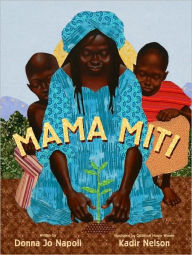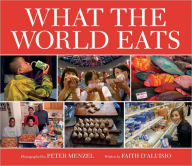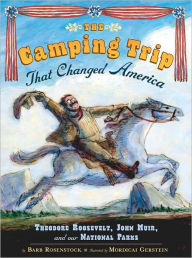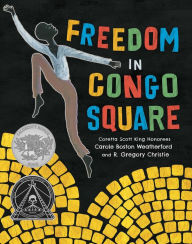Brilliant at bas-relief cut-paper collage, Giles Laroche is the illustrator of several picture books—including What Do Wheels Do All Day (Houghton) and Bridges are to Cross—many of which have generated starred reviews and foreign and special sales. He lives in Salem, MA and in the summer moves to an old barn in New Hampshire.
If You Lived Here: Houses of the World
Hardcover
- ISBN-13: 9780547238920
- Publisher: Houghton Mifflin Harcourt
- Publication date: 10/25/2011
- Pages: 32
- Sales rank: 60,564
- Product dimensions: 10.30(w) x 11.10(h) x 0.50(d)
- Lexile: NC1170L (what's this?)
- Age Range: 6 - 9 Years
What People are Saying About This
Choose Expedited Delivery at checkout for delivery by. Monday, October 14
Step into unique homes from around the world and discover the many fascinating ways in which people live and have lived.
If you lived in the mountains of southern Spain, your bedroom might be carved out of a mountain. If you lived in a village in South Africa, the outside of your house might tell the story of your family. And if you lived in a floating green house in the Netherlands, you could rotate your house to watch both the sunrise and sunset.
With intricate bas-relief collages, Giles Laroche uncovers the reason why each home was constructed the way in which it was, then lets us imagine what it would be like to live in homes so different from our own.
Showing the tremendous variety of dwellings worldwide—log cabins, houses on stilts, cave dwellings, boathouses, and yurts—this book addresses why each house is build the way that it is. Reasons—such as blending into the landscape, confusing invaders, being able to travel with one's home, using whatever materials are at hand—are as varied as the homes themselves.
List of Houses included:
Dogtrot log house, based on dogtrots built in the southern U.S.
Chalet, based on chalets built in the Austrian Alps.
Pueblo, Taos, New Mexico
Connected barn, based on connected barns common in northern New England.
Cave dwelling, Guadix, Andalucia, Spain
Palafitos (house on stilts), Chiloe Island, Chile
Palazzo Dario, Venice, Italy
Chateau La Brede, Bordeaux, France
Tulou, Hangkeng village, Yongding, China
Half-timbered houses, Miltenberg am Main, Germany
Greek island village houses, Astipalaia Island, Greece
Decorated houses of Ndebele, Pretoria, Transvaal, South Africa
Yurt, based on yurts in Mongolia and other parts of central Asia.
Airstream trailer, USA
Floating house, Middleburg, the Netherlands
Tree house, USA
Customers Who Bought This Item Also Bought
-
- Africa Is Not a Country
- by Anne Sibley O'BrienJim KnightMargy Burns Knight
-
- Planting the Trees of Kenya:…
- by Claire A. NivolaClaire A. Nivola
-
- Pop!: The Invention of Bubble…
- by Meghan McCarthyMeghan McCarthy
-
- Mama Miti: Wangari Maathai and…
- by Donna Jo NapoliKadir Nelson
-
- Lost and Found Cat: The True…
- by Doug KuntzAmy ShrodesSue Cornelison
-
- One Hen: How One Small Loan…
- by Katie Smith MilwayEugenie Fernandes
-
- What the World Eats
- by Faith D'AluisioPeter Menzel
-
- Roanoke, the Lost Colony: An…
- by Heidi E. Y. StempleRoger Roth Sr.Jane YolenHeidi Elisabet Yolen Stemple
-
- Biblioburro: A True Story from…
- by Jeanette WinterJeanette Winter
-
- If the World Were a Village -…
- by David J. SmithShelagh Armstrong
-
- The Camping Trip That Changed…
- by Barb RosenstockMordecai Gerstein
-
- The Red Bicycle: The…
- by Jude IsabellaSimone Shin
-
- Those Rebels, John and Tom
- by Barbara KerleyEdwin Fotheringham
-
- Freedom in Congo Square
- by R. Gregory Christie
-
- Tucky Jo and Little Heart
- by Patricia PolaccoPatricia Polacco
-
- The Watcher: Jane…
- by Jeanette WinterJeanette Winter
-
- I'm New Here
- by Anne Sibley O'BrienAnne Sibley O'Brien
Recently Viewed
"With such small connections, Laroche emphasizes the similarities over the differences, making this volume both an informative sampling of domestic architecture and a meaningful representation of global culture."—Booklist
Many North American children have a difficult time visualizing places or houses different than their own; this survey will help somewhat.
The dwelling places pictured here will enlarge their knowledge base to some extent, but due to the limited representations (only 15 types of housing), readers will still need additional sources to understand shelter in a fuller geographic or historic context. Laroche's engagingly intricate, bas-relief collages provide a sense of the environments andthe people living in the houses. A range from a "dogtrot log house" (mid-Atlantic or southern U.S. in the 18th and 19th centuries) with two living spaces connected by a long roof and walk-through space to a 1986 Dutch high tech" green" floating house that can turn on its own platform. Other houses include a Venetian palazzo (confusingly, the author says... "the floor of the bottom story is water!") and a Fujian tulou, a round, "rammed earth" structure (the one depicted was built in China in 1912). The text includes house type, materials, location, date and a (sometimes) "fascinating fact." On a sexist note, the last spread teams to show three boys working on a treehouse. Overall weaknesses involve too much emphasis on European and U.S. examples and a map that links the styles to their geographic areas without marked political boundaries.
Best used to encourage children to create their own collages or three-dimensional models, this misses the mark as a strong introduction to domestic architecture. (selected sources) (Informational picture book. 6-9)

















